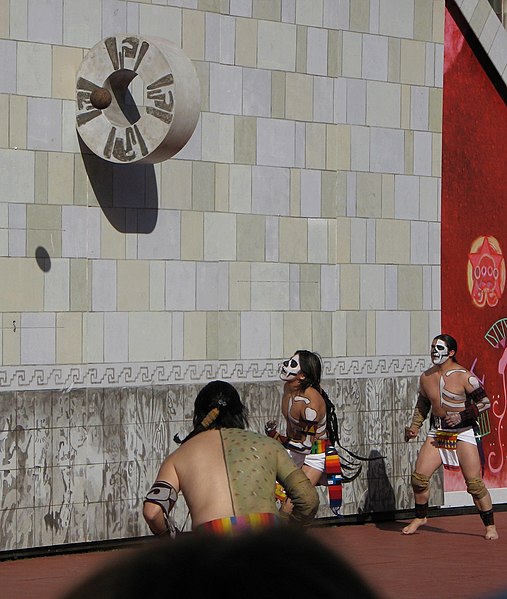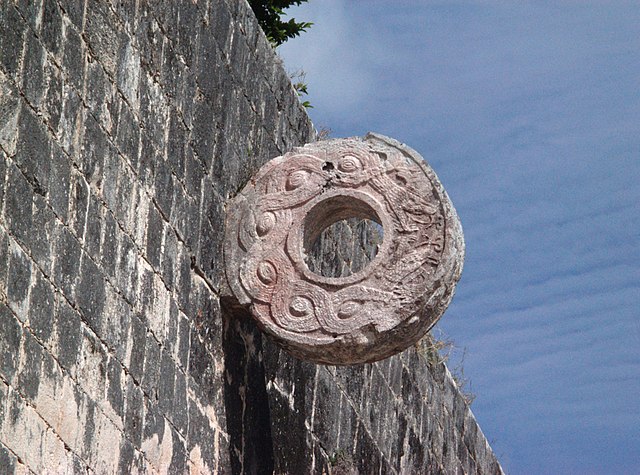A Mesoamerican ballcourt is a large masonry structure of a type used in Mesoamerica for more than 2,700 years to play the Mesoamerican ballgame, particularly the hip-ball version of the ballgame. More than 1,300 ballcourts have been identified, 60% in the last 20 years alone. Although there is a tremendous variation in size, in general all ballcourts are the same shape: a long narrow alley flanked by two walls with horizontal, vertical, and sloping faces. Although the alleys in early ballcourts were open-ended, later ballcourts had enclosed end-zones, giving the structure an -shape when viewed from above.
Ceramic sculpture from a Western Mexican tomb showing players engaged in the Mesoamerican ballgame
Great Ballcourt at Chichen Itza
Mesoamerican ball court at Teotenango
Ballgame court at Monte Albán
Mesoamerican ballgame, Ollamaliztli, was a sport with ritual associations played since at least 1650 BC by the pre-Columbian people of Ancient Mesoamerica. The sport had different versions in different places during the millennia, and a modernized version of the game, ulama, is still played by the indigenous populations in some places.
The ball in front of the goal during a game of pok-ta-pok, 2006
A view into the ballcourt at Chichen Itza
Some ballcourts had upper goals, scoring on which would end the match instantly.
A modern Sinaloa ulama player. The outfit is similar to that worn by Aztec players.








